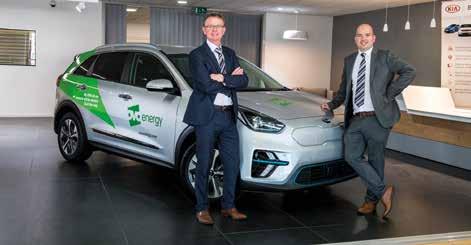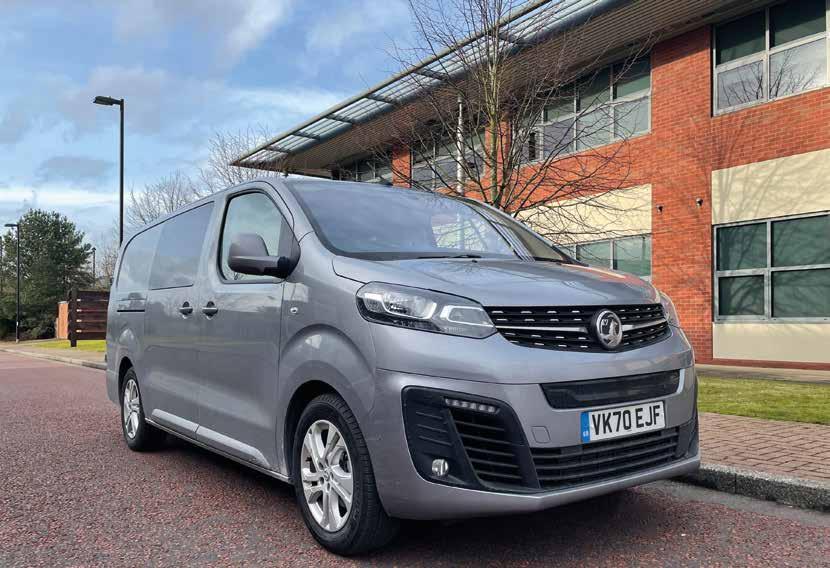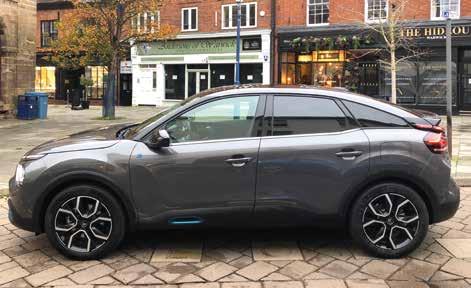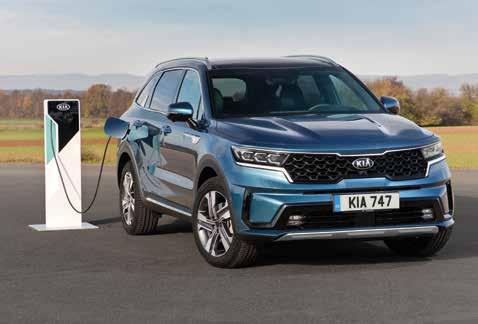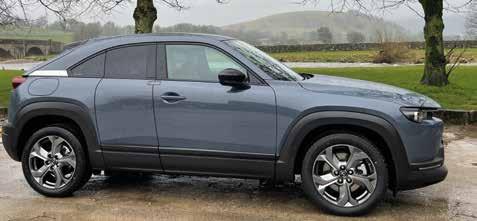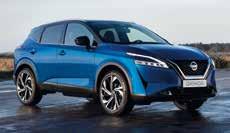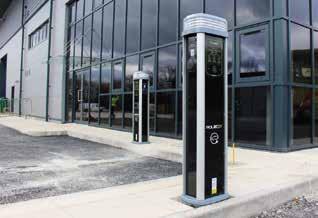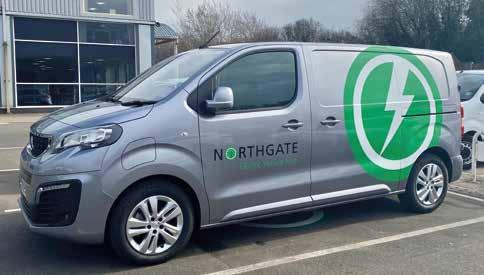ON TEST: MERCEDES-BENZ e-SPRINTER
www.companycarandvan.co.uk
eSprinter is the van for the discerning delivery driver Mercedes-Benz’s eSprinter is the premium urban delivery vehicle but with a price tag north of 50k, does it offer value? Andrew Walker finds out. We first drove the latest Mercedes-Benz Sprinter back in 2018 and came away mightily impressed. The brand stated then that an electric version would follow and in late 2020, Mercedes-Benz duly delivered, launching the eSprinter. The eSprinter shares its running gear with the smaller eVito electric van, which we drove in 2020, and like its smaller electric brethren, it’s quite a bit more expensive than the diesel variant. Prices start from £51,950 for the eSprinter Progressive L2 H2 FWD, a price that excludes VAT and the OLEV grant. Customers should note that where the diesel range feature three specs – Pure, Progressive and Premium – eSprinter is only offered in Progressive trim and with one size of battery, the 55kWh. This equates to a range of up to 96 miles. From the outside, there’s not a lot to distinguish the eSprinter from any other Sprinter. There’s a lower case blue ‘e’ in front of Sprinter on the rear left door, but that’s about it. Even the recharging port is tucked away, hidden underneath the Benz badge located in the centre of the front grille. Look inside and again, it’s almost identical to an auto diesel Sprinter, featuring the same steering wheel stalk gear lever, an identical dashboard and the same cabin storage. There’s also a top quality finish to the dash and the neat and tidy matt
32 | April 2021 | Company Car & Van
black interior. The main difference is that underneath the Start button is a Drive Mode selector, which allows you to select from three electric driving modes, C, E and E+. C stands for Comfort and is the default mode, delivering the full power and torque of the van; E is for Economy and limits the power and torque; and E+ lowers the power further and also deactivates the climate control. Furthermore, like many current EVs, eSprinter also comes with brake regeneration. You can adjust the level of this via steering wheel-mounted paddles. Default is D- which provides the most regen though you can also opt for D or D+, which both reduce the braking
force. There’s also the option to choose D++, which turns the regen braking off. All of these settings can be viewed in the instrument cluster located in front of the driver. In Progressive spec, you get a heated seat for the driver with armrest, dual passenger seat, comfort overhead control panel, a full-width partition, height and rake adjustable steering wheel, TEMPMATIC air-con, a wooden floor, a mode 3 type 2 eight-meter charging cable, linear speed limiter 120km/h, headlight assistant, heat-insulating glass, and 270-degree double-wing rear-end doors. In addition to DAB radio, the Mercedes-Benz audio system comes with a Bluetooth interface with hands-free function and a USB port Safety features include Active Brake ASSIST, Attention ASSIST, Crosswind ASSIST and Emergency eCall. There are also double locks and a Thatcham Category 1 approved alarm as standard, along with remote locking, theft warning alerts and geo-fencing, thanks to Mercedes PRO connect. Standard charging speed is 20kW, which takes two hours to go from 10% to 80%. This can be upgraded to 80kW rapid-charging, which lowers that time to 30 minutes for the same increase in battery life. Both options come as standard with an eight-metre Type 2 cable. We would definitely recommend either of these charging methods as fully charging the eSprinter at home is time consuming, as we discovered. Using a 7.4kW Rolec home charger (https://www.rolecserv.com/homecharging) takes upwards of eight hours. Continued on page 34 www.companycarandvan.co.uk









